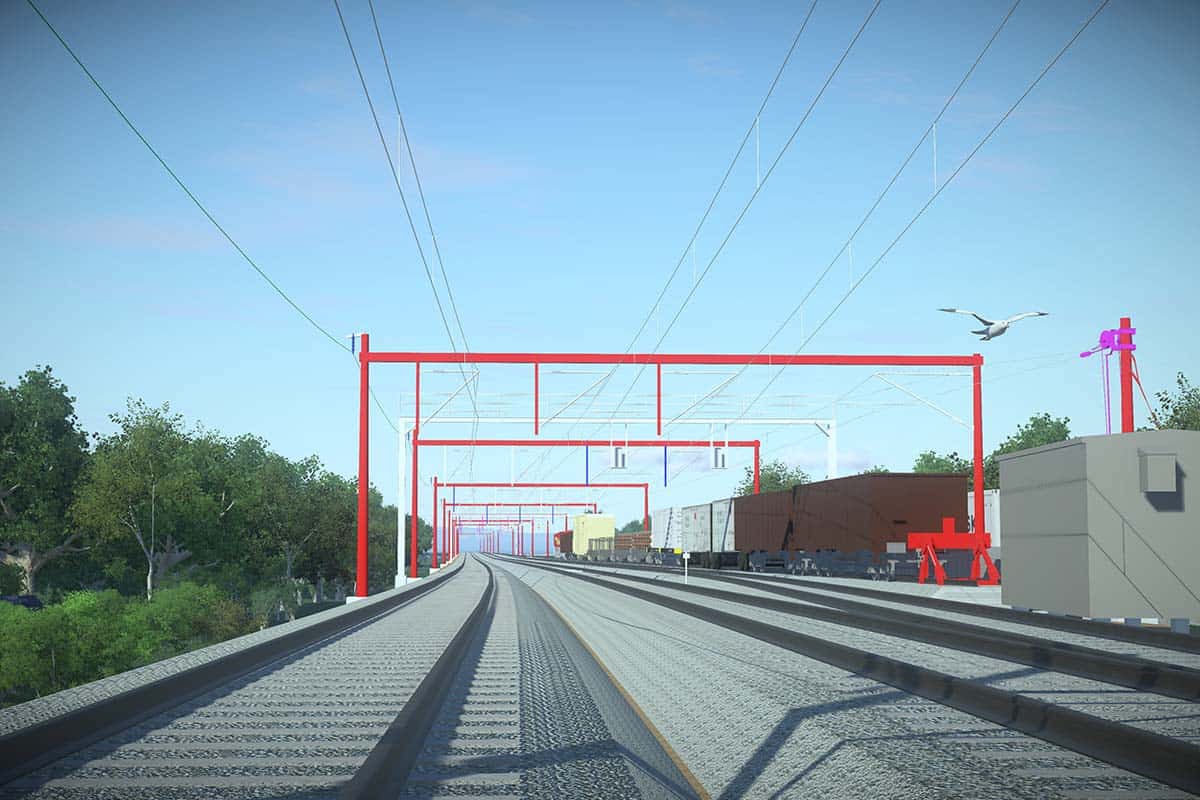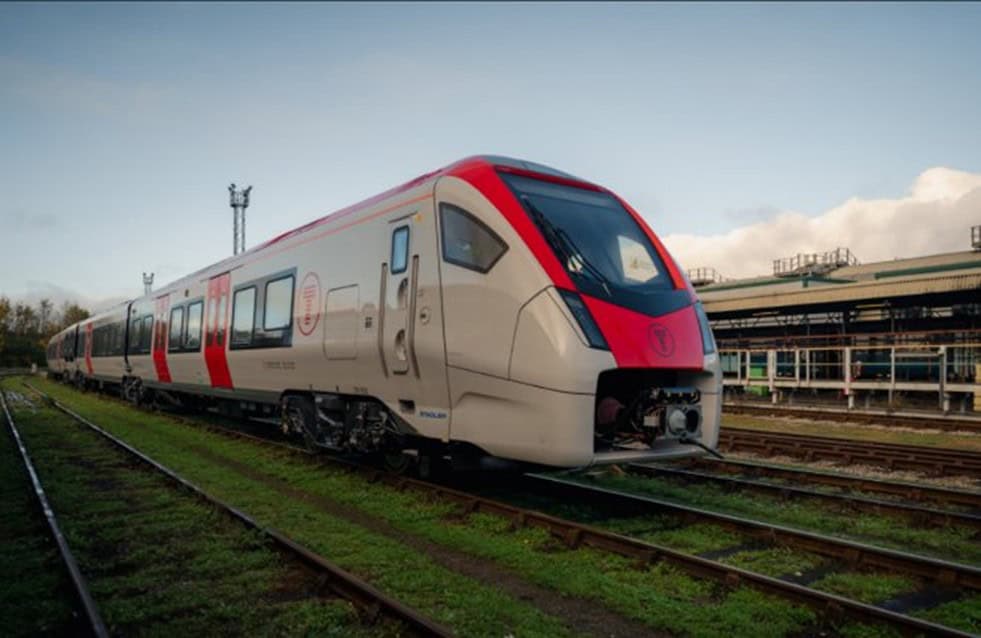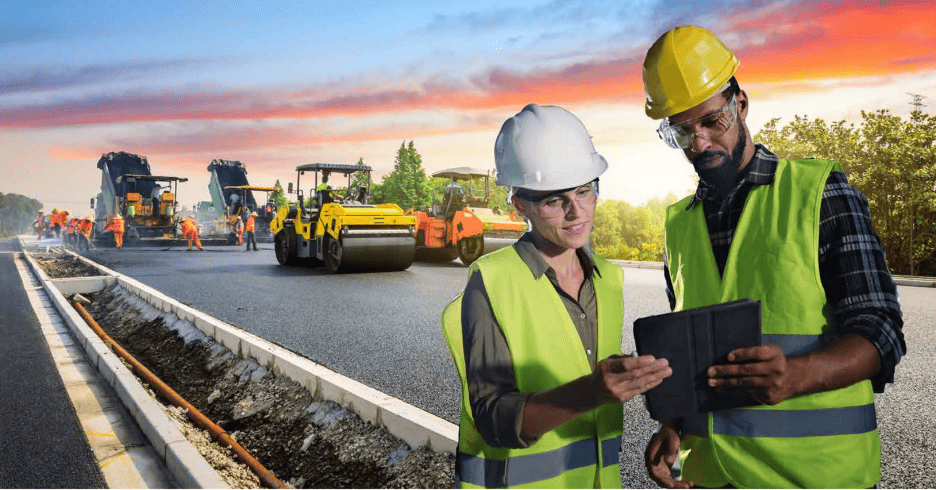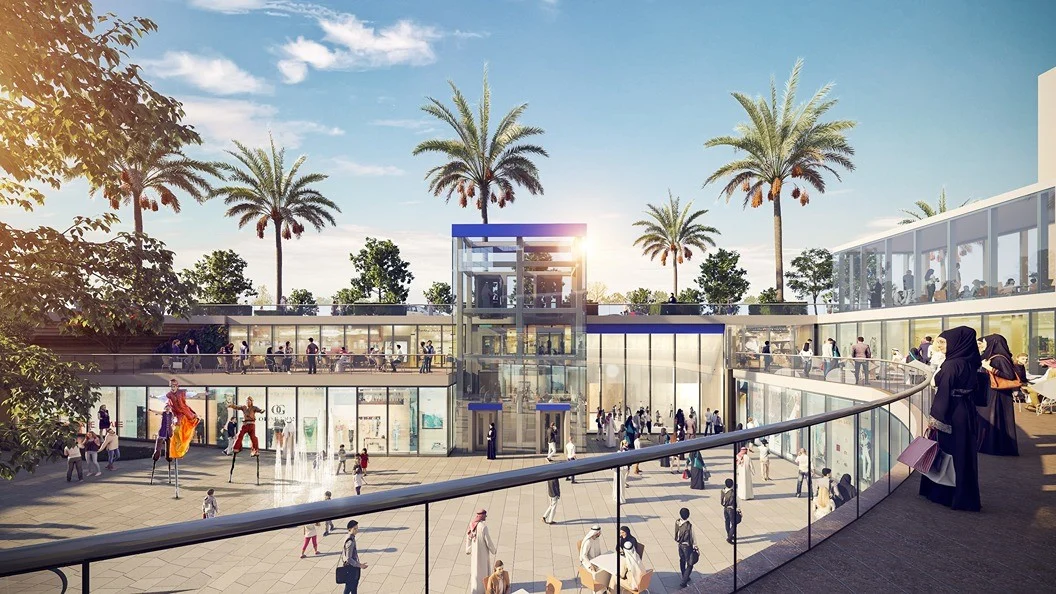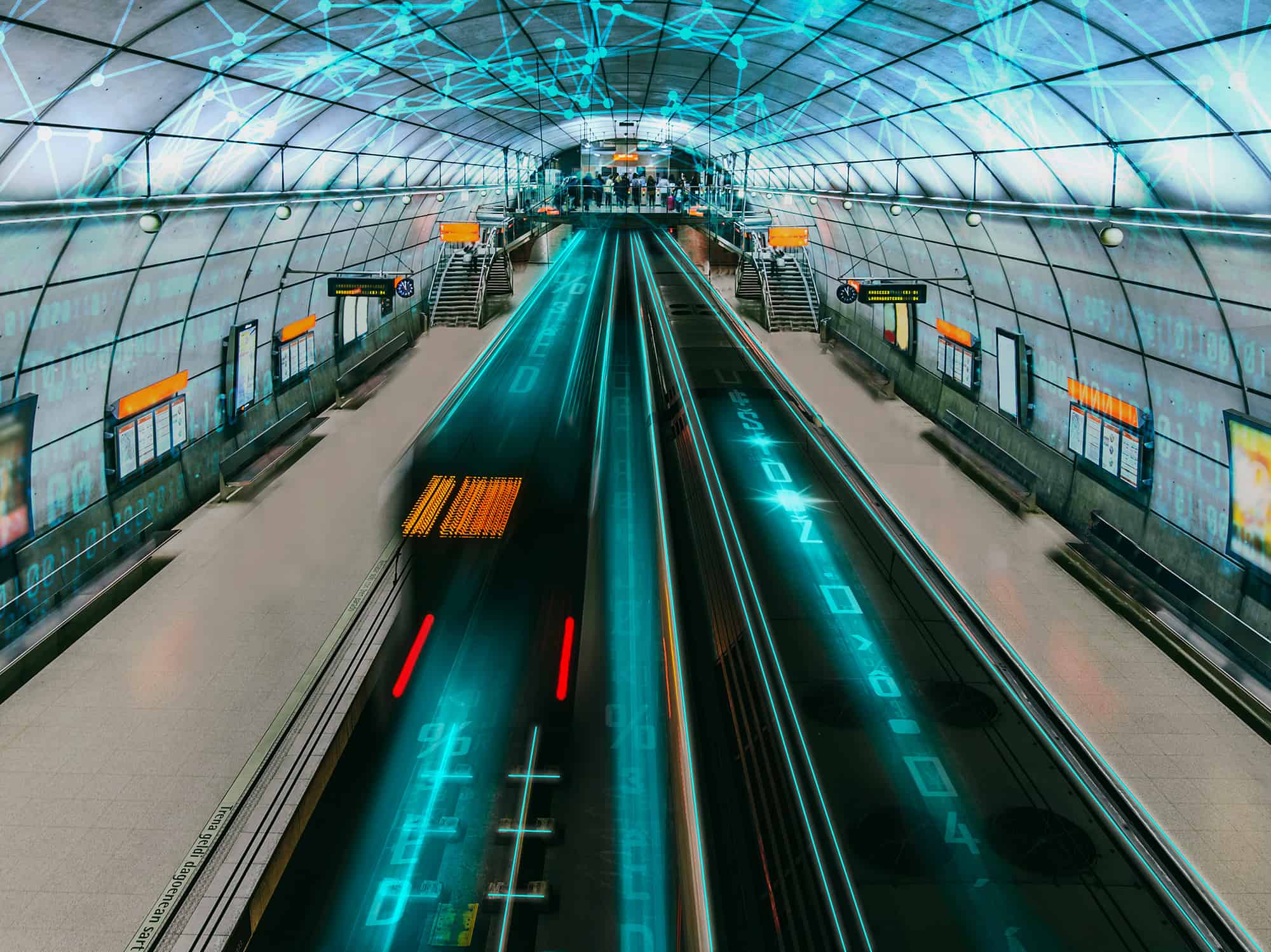Digital tools are reshaping how teams plan, design, and deliver infrastructure, bringing speed, accuracy, and collaboration to the forefront.
Here is a quick summary of what’s driving this shift:
- Traditional rail design methods limit efficiency and digital integration.
- Bentley’s railway design software offers significant advantages when transitioning from 2D to 3D for rail projects.
- Using the right software means better visualization, more accurate design, easier collaboration, and streamlined workflows.
- New tools support complex geometry, cant workflows, and rapid updates, helping teams deliver faster with fewer errors.
Rail networks today are under growing pressure to modernize, expand, and align with smart city infrastructure. Governments are investing in sustainable transit, passengers expect seamless digital experiences, and engineering teams must deliver faster, safer, and more efficiently, often with tighter budgets.
As a rail engineer, you help shape the systems that keep cities and countries moving. Each project demands a careful balance of safety, efficiency, environmental impact, and cost. With the industry evolving rapidly, the push for smarter, more sustainable solutions is constant. Digital delivery is now essential, and the demand for speed, accuracy, and collaboration continues to rise.
2D just doesn’t cut it anymore
You’ve built your career meeting tight deadlines, adapting to evolving standards, and rising to ever-increasing expectations. But the tools you’ve long relied on are no longer keeping pace. Traditional 2D CAD workflows, while once effective, are now a bottleneck for teams looking to deliver modern railway systems. They’re time-consuming, error-prone, and ill-suited for the complexity of today’s rail projects. Every design change can trigger hours of rework, with limited support for real-time collaboration or spatial insight. To stay ahead, you need more than a design tool, you need a better way of working, modern, open and connected design workflows built for the demands of digital rail delivery.
Experience better coordination, collaboration, and consistency
OpenRail Designer embraces a design-driven approach to increase productivity. By leveraging integrated 2D and automated 3D modeling, you can continue using familiar design methods while benefiting from the advantages of new technologies.
Rail engineers and designers work in 2D, defining track geometry and corridor earthworks, while the software automatically generates 3D models. This same model data facilitates seamless collaboration across disciplines. Electrical engineers can design and analyze catenary systems using the same track geometry, while drainage and utilities engineers can work on their respective designs. Using a unified model throughout the project lifecycle ensures better coordination, collaboration, and design consistency.
The automatically generated 3D model is invaluable for detecting clashes and reviewing designs to identify errors or omissions early on. This proactive approach allows designers and reviewers to address potential conflicts between disciplines, utilities, or physical constraints much earlier in the project lifecycle. Furthermore, a design-driven approach connects designs directly to plans production, guaranteeing high-quality and consistent multidiscipline documentation sets across the entire project, leading to significant time and cost savings.
Upgrade your rail design workflow with OpenRail Designer
If you’re currently using Bentley Rail Track or Bentley Power Rail Track, now is the time to consider making the move to unlock a new level of efficiency and precision in your projects. Our latest release introduces several key updates to further enhance your design experience:
Easier-to-use geometry
OpenRail Designer now features more intuitive functionality and increased performance when creating and editing complex geometry. Complex geometry is presented more clearly in the Properties pane, and editing is simplified with improved features like Complex Redefine and Alignment Replacer.
A new toggle option allows for easy orientation and annotation of design profiles and sheet drawings from right to left or left to right. The ability to efficiently project, view, and analyze multiple profiles simultaneously, with synchronized views and highlighting of design requirement deviations, significantly improves the design and analysis process.
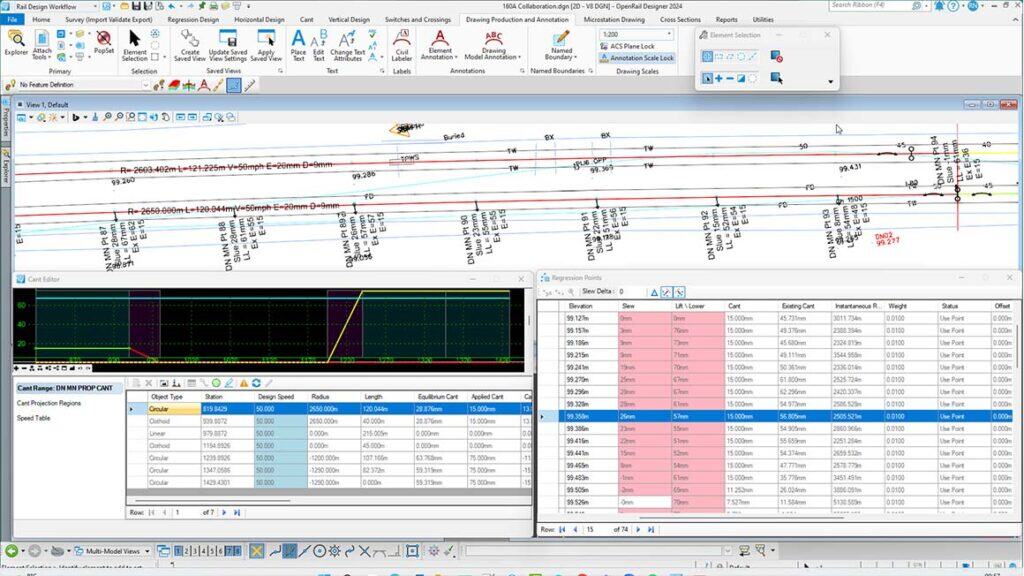
Updated regression and cant workflows
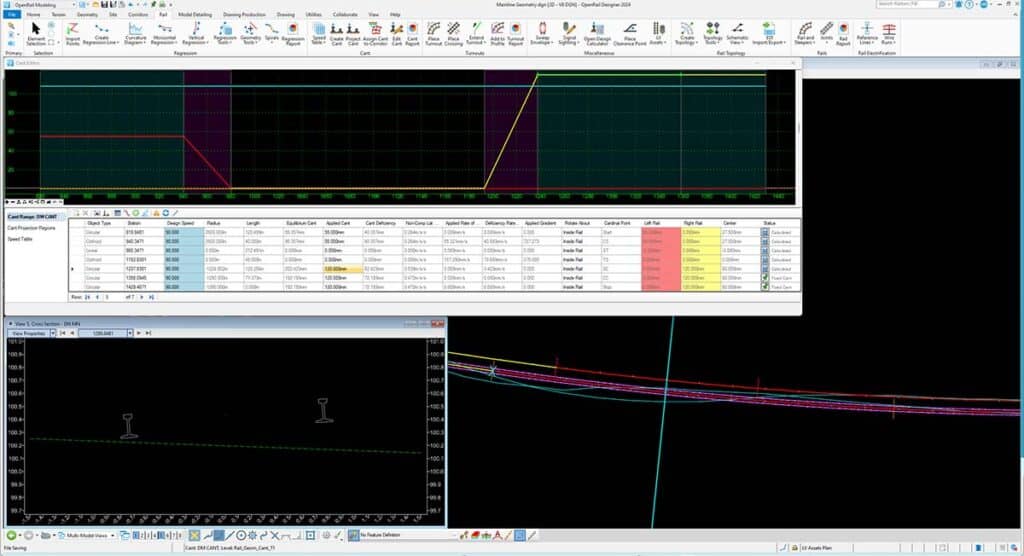
More efficient drawing production
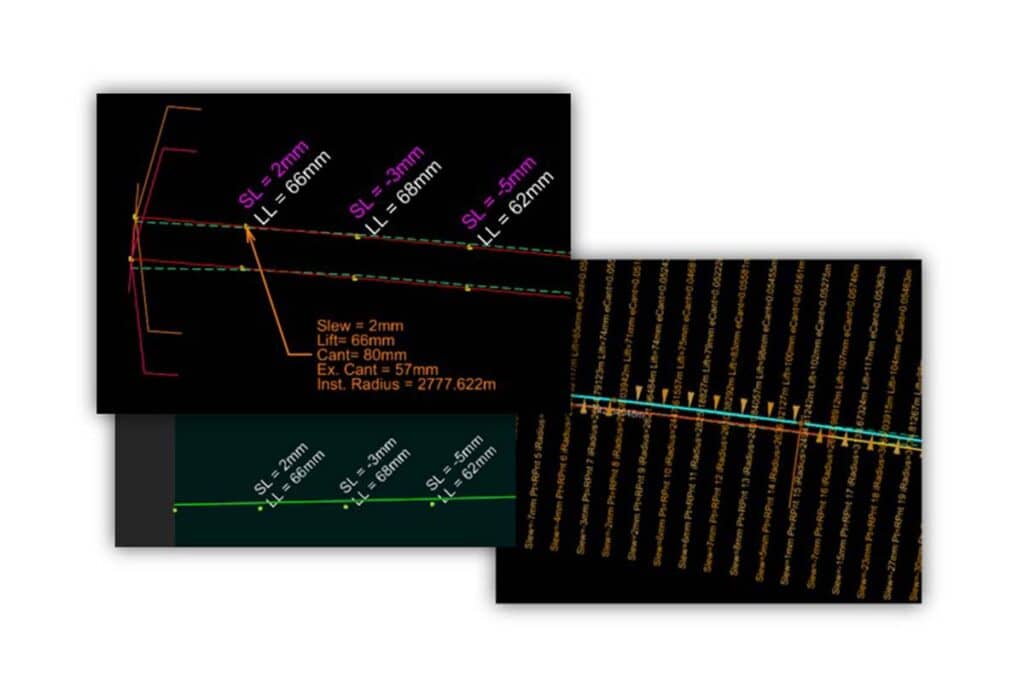
Consolidated reporting
Low-voltage assets - improved handling of rails
U.K. localization
A new U.K. Turnout Bending Method, developed and approved by Network Rail, is now available, and the Network Rail U.K. turnout library has been updated accordingly. A new U.K. Rail Workspace, set up to meet Network Rail and U.K. market standards, eliminates the need for manual setup, increasing productivity and reducing risk.
Australia localization
The Western Australian cubic parabola formula, required for track design in Western Australia, is now available in the Geometry Connector, increasing productivity and reducing design time.
To learn more about the new capabilities and workflows in OpenRail Designer, check out our video playlist.
Access resources to upskill your workforce
Bentley is committed to your success and provides access to resources designed to upskill your workforce, including rail design courses tailored to today’s rail designers’ workflow needs. Benefit from expert support, mentoring by Bentley project experts, best practice implementation guides, and on-demand training to increase efficiency and productivity.
Embrace the future of rail design with OpenRail Designer
OpenRail Designer offers a powerful and comprehensive solution for all your rail infrastructure design needs. By providing enhanced functionality, improved workflows, and a focus on collaboration and efficiency, it empowers you to deliver safe, resilient, and compliant projects on time and within budget. Make the move to OpenRail Designer and experience the future of rail design today.
Meet the demands of modern railway systems by switching to OpenRail Designer today.
